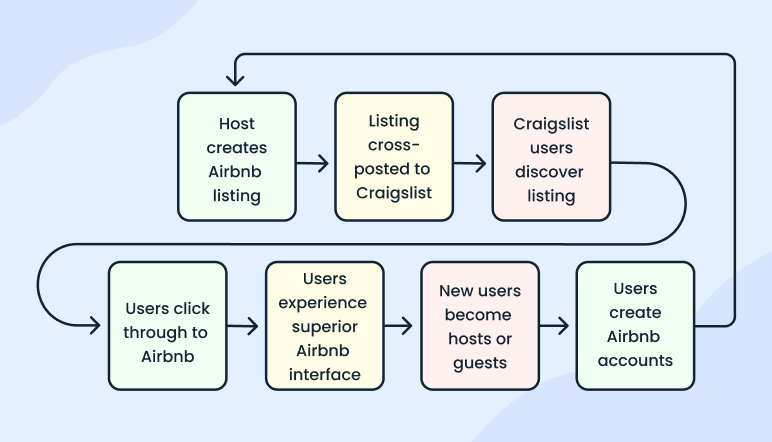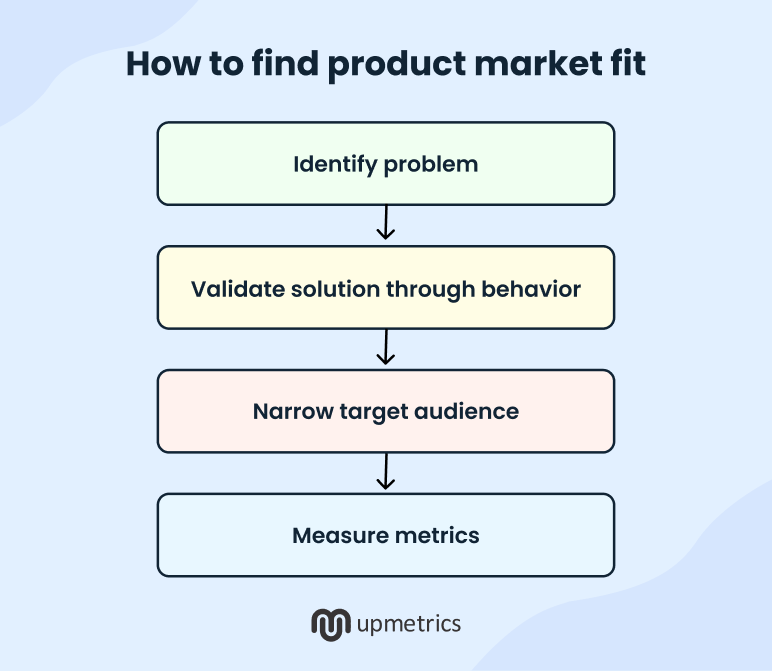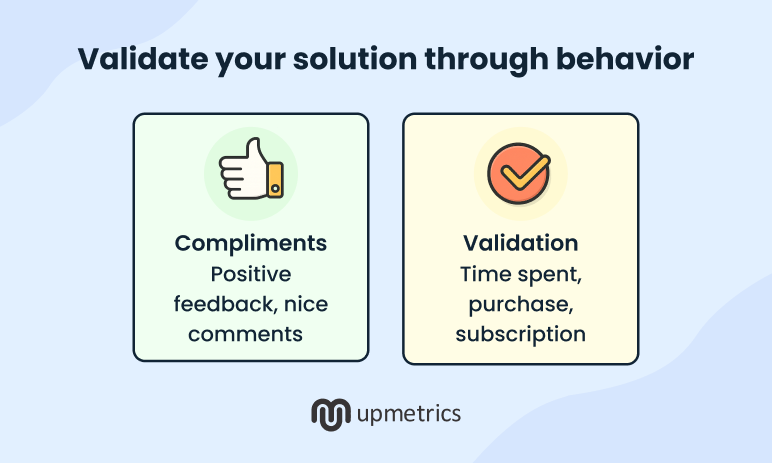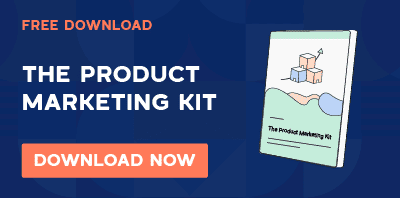When I first heard the term “product-market fit,” I imagined it as a finish line. You know—launch a product, throw some marketing at it, and boom: Customers appear, champagne pops, confetti everywhere.
Turns out, I was wrong, way wrong.
Finding product-market fit is closer to pitching an idea in a boardroom full of skeptical investors. You walk in confident, share your big vision, and then watch closely.
Are people leaning in, asking questions, nodding along—or are they politely checking their phones? That reaction tells you more than your slides ever will.
Over the years, I’ve seen founders walk into the market with products that immediately got people leaning in, and others who had to rework the pitch (and the product) several times before anyone paid attention.
So in this blog, I’ll break down what product-market fit really means and how you can figure out if you’ve got the nods—or just the polite smiles.
What is actually the product market fit (PMF)?
Product-market fit is the point where your product solves a problem so well for a specific group of people that demand becomes natural. Customers aren’t just willing to use it; they actively want it, look for it, and would care if it disappeared.
Sean Ellis puts it simply: “Product-market fit is when people are buying the product as fast as you can make it.”
You can recognize PMF in customer behavior with these factors:
- High retention: People return without constant reminders.
- Low churn: They stick with it after trying it.
- Organic growth: New users show up because others told them about it.
- Demand pull: The market is pulling the product from you instead of you pushing it onto them.
A great example of PMF is Airbnb. It achieved product-market fit by solving a real problem: Providing affordable, unique lodging when hotels were fully booked. Their early success showed with 700% year-over-year growth and strong repeat usage from both hosts and guests.
The breakthrough came from their Craigslist integration hack. They built a feature allowing hosts to cross-post Airbnb listings to Craigslist with one click, tapping into Craigslist’s massive traffic while showcasing Airbnb’s superior interface.

This created a powerful growth loop: Craigslist users discovered listings → clicked through to Airbnb → experienced the better interface → created accounts → became active hosts or guests.
This strategy solved the marketplace chicken-and-egg problem by borrowing liquidity from an established platform.
When PMF is in place, customers keep using the product, tell others about it, and stay loyal without you having to constantly push them.
How to find product-market fit: A 4-step framework
Maybe you’re writing your very first business plan, or maybe you’ve already got a draft sitting on your desk. Either way, the next steps look the same. If you’re starting fresh, you’ll be filling in the gaps. If you already have a version, you’ll be making adjustments and tightening things up.
I mean, the way to product-market fit is structure. Test, cut what fails, and build more of what actually clicks with your users.
Let’s break that down into a clear 4-step framework.

Step 1: Identify a real, urgent problem
The mistake most founders make is beginning with a product idea they love and then trying to force-fit it into a problem. That almost always ends up slow and costly.
What you can do here is start with a problem that already hurts. I mean, something people are spending money on, losing time over, or constantly complaining about.
The best way to validate your business idea at this stage is by talking directly to potential users. Ask simple but sharp questions like:
- “What’s frustrating about how you’re handling this today?”
- “What would a better fix look like?”
- “What happens if you do nothing about this problem for a few months?”
Here’s what you’ll notice: If people shrug and say they can live with it, it’s not urgent enough. But if their frustration shows up in their tone, if they tell you how it slows them down or costs them, then you’ve found something real. That’s the kind of problem worth testing your MVP (minimum viable product) against.
How this fits into your business plan: Take what you learn and write a clear “Problem statement” in your plan. Keep it short, but make sure it covers three things:
- Who has the problem
- What the problem is
- Why it matters right now
This section is the anchor for the rest of your plan and your PMF journey. Without it, everything else (your solution, your MVP, even your metrics) will be built on shaky ground.
Step 2: Validate your solution through behavior
This is where a lot of founders get tricked. They hear positive feedback and take it as proof. But a compliment isn’t validation. Someone saying “this is interesting” doesn’t mean they’ll use your product, and it definitely doesn’t mean they’ll pay for it.
This is also where your MVP comes in. The whole point of validation is to see if it gets real behavior. It doesn’t have to be polished; it could be a landing page, a clickable prototype, or even a manual version where you deliver the outcome by hand.

Here are the validation methods I’ve used with early-stage teams, starting from the fastest and cheapest:
- Landing page test: Simple page, one CTA, track conversion rate.
- Waitlist or beta access: Limit spots and watch if people push to get in.
- Clickable prototype: Give them something to click and see how they use it.
- Manual service: Deliver results by hand and see if they return.
You don’t need a finished product to run any of these. Many validate concepts with nothing more than a $12 Squarespace site and an email form.
If people say “yes” in conversation but never take a step toward using it, you don’t have fit yet; you just have a friendly audience.
Step 3: Narrow your target audience
Trying to appeal to “everyone” is usually how you end up appealing to no one. I mean, product-market fit almost always starts in a tiny, specific niche before it ever expands.
To get clarity on who that niche is, go deeper than broad labels like “millennials” or “small businesses.” Break it down with a simple analysis:
- Demographics: Role, industry, location, or stage of business
- Behavior: The tools, processes, or workarounds they’re currently using
- Motivation: What would make them switch today, not eventually
- Job-to-be-done: The clear outcome they’re trying to achieve
Once you’ve defined this group, build for them first. Your first version should be shaped around their pain—features, onboarding, messaging, and even pricing. If you get traction here, widening your reach later becomes a decision based on evidence, not a gamble.
How does this fit into your business plan?
Update the “target market” or “customer analysis” section with this refined audience. Be specific about who you’re serving now, and position future markets as potential expansions. That way, your plan shows both focus and growth potential.
Step 4: Measure the right metrics
It’s easy to get excited when traffic spikes or social media posts take off. But I mean, likes aren’t loyalty. What really matters for product-market fit is whether people are actually using, returning, and recommending your product.
Here are the signals to track:
- Retention rate: Do customers keep coming back week after week or month after month?
- Churn rate: Are the majority of signups sticking around, or dropping off quickly?
- Referral rate: Are new customers showing up because others told them about it?
- Usage depth: Are people actually using the main features, not just logging in once?
- Willingness to pay: Do they continue once there’s a price tag attached?
- Sean Ellis test: If 40% or more say they’d be very disappointed to lose access, you’re in solid PMF territory.
At this stage, you don’t need advanced analytics tools. Even during your MVP phase, a simple spreadsheet is enough to track the basics. The point is to look for consistency: when multiple metrics start trending in the right direction at the same time, you know you’re not just chasing attention; you’re building something people genuinely value.
How this fits into your business plan:
Include these signals in the “Milestones” or “Traction” section. Instead of only showing vanity numbers like downloads or followers, highlight the usage and retention metrics that truly indicate progress toward product-market fit.
What to do once you’ve hit product-market fit?
Reaching product-market fit can feel like crossing the finish line, but in reality, it’s the start of a different race. At this stage, the challenge shifts from finding demand to sustaining and scaling it without breaking what’s working.
Oftentimes, companies lose PMF faster than they found it, usually because they rushed growth or changed core parts of the product without understanding the impact. Here’s how:
1. Iterate cautiously
When you hit product-market fit (PMF), you’ve essentially made an unspoken agreement with your users. They continue using your product because it delivers specific value in ways you might not even realize.
Rapid changes, even those you believe are improvements, can jeopardize this delicate balance.
The prudent approach is to test first. Select a small user group, measure retention, and gather feedback before implementing changes broadly. A noticeable decline in engagement or satisfaction is a clear signal to reconsider.
A notable instance of cautious iteration involves Instagram. In 2016, the platform transitioned from a chronological to an algorithmic feed, aiming to prioritize posts users would find most engaging.
This change was met with significant backlash, as many users felt they were missing out on timely updates from friends and family.
In response to the outcry, Instagram reintroduced the chronological feed option, allowing users to choose their preferred viewing experience. This incident underscores the importance of understanding user needs and the risks associated with abrupt changes.
2. Scale what’s already working
After PMF, it’s tempting to chase every new channel, market, and segment at once. But that’s often how momentum slips away by diluting what actually worked.
Basically, it’s about replication before expansion:
- Double down on the channels, bringing your best customers.
- Keep onboarding and activation exactly as they are; don’t “refresh” too soon.
- Move into adjacent segments with the same core problem before tackling new markets entirely.
I mean, the real goal is to scale the conditions that created PMF, not just the numbers. If you can’t recreate that original experience at a bigger scale, your retention curve will call you out fast.
3. Strengthen onboarding and support
Early adopters often stick around despite a few rough edges; they’re motivated to solve the problem. New users won’t be as forgiving.
The point is you need to watch time-to-value (TTV): The gap between sign-up and that first real “aha” moment. If TTV starts stretching out, churn usually follows. Improving onboarding here tends to give you a bigger return than any ad spend.
Support matters just as much. As you grow, there’s a risk that new customers start feeling like ticket numbers, not people. What I mean is keeping support quick, human, and personal during scaling protects trust, and trust is a big part of why PMF holds.
4. Watch for early warning signs
Losing PMF doesn’t usually happen in one big crash; it tends to slip away in small, noticeable ways before growth really takes a hit. In other words, there are early signals worth watching for:
- A sudden rise in churn, especially among your long-time customers.
- A noticeable drop in NPS or the overall tone of customer feedback.
- Fewer organic referrals coming in.
- A steady decline in usage of your core features.
The idea here is that if these trends start heading in the wrong direction, it’s a sign to ease up on aggressive growth moves and figure out what’s going wrong. You can usually fix small cracks early, but once PMF fully collapses, you’re looking at a complete rebuild.
5. Bake PMF into the business plan
Post-PMF is where many teams stop tracking what got them here. BIG mistake!
At this stage, I make PMF metrics part of the ongoing business plan, not just a milestone you “hit” once. Tools like Upmetrics make this easier: You can model scenarios before you act. That includes pricing changes, new market launches, or major feature rollouts.
Scaling should feel intentional, not reactive. If a move doesn’t preserve or improve the core PMF signals, it’s not worth doing yet.
Here’s the part founders don’t always expect: Product-market fit isn’t permanent. You can lose it just as easily as you can find it, and often the warning signs are easy to miss.
Can you lose product-market fit?
Yes, and it often happens more quietly than most founders expect. Teams hit PMF, feel confident, and then rush into new markets, hire too quickly, or start layering on features that dilute the original experience.
The result is that the very users who created your early traction begin to feel like the product is no longer “for them,” and your unique value proposition starts to blur.
The warning signs usually show up in your metrics before they show up anywhere else. If churn creeps up among long-time users, referrals slow down, or engagement with your core features starts dropping, it’s a clear signal that something isn’t right.
The fix is to keep testing changes with a small group before rolling them out widely, focus expansion on adjacent audiences who share the same core problem, and protect the onboarding experience that made early adopters stick around.
The bottom line
Reaching product-market fit is a huge milestone, but it’s not the final destination. It’s the point where your focus shifts from finding demand to protecting it and scaling it without losing what makes it work.
In my experience, the founders who keep PMF aren’t the ones who make the loudest moves. They’re the ones who:
- Keep their earliest customers close and keep listening to them.
- Resist the temptation to jump into untested markets too soon.
- Make small, deliberate improvements instead of chasing shiny ideas.
If you’re at the stage where fit is solid and you’re ready to scale, you need more than ambition; you need a plan you can trust. That’s where a tool like Upmetrics becomes invaluable. It turns your hard-won customer insights into realistic growth forecasts, scenario plans, and a roadmap that keeps your decisions grounded.
Finding PMF is hard work. Keeping it and building on it is where the work really starts to matter.


